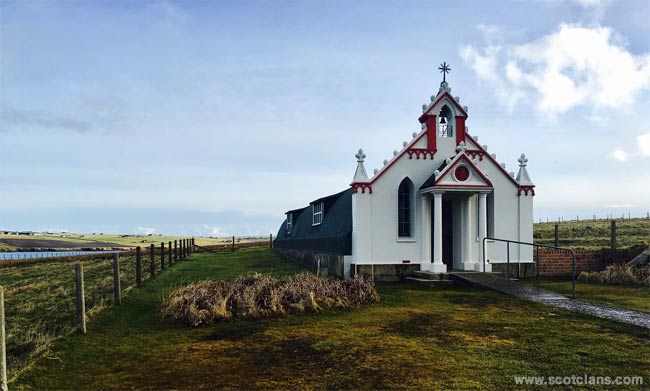
Day 1 of our Orcadian Adventure
For February break we decided to take a family trip to Orkney, it’s one place in Scotland we have never been to. We caught the ferry from Gills Bay to St Margaret’s Hope. A fun 1 hour trip. The departure was at 1.30 so it was a very early start from our home in Edinburgh.
Our base for the week was St Margaret’s Hope. Only 10 mins down the road was the Italian Chapel. Orkney is a cluster of around 70 islands, the main ones are all connected by causeways. Between where we were at St Margaret’s Hope you go across what is called The Churchill Causeway 3 and The Churchill Causeway 2 to get to the island of Lambholm where the Italian Chapel was.

The causeways were erected during World War II to prevent the passage of German submarines into Scapa Flow, a naval base used by the British. When you pass over these causeways shipwrecks can be seen on either side – an attempt to stop submarines getting through. In 1939 a German U-boat had slipped undetected into Scapa Flow and launched a torpedo attack on HMS Royal Oak with the loss of 833 crew. This tragedy prompted plans to build causeways to seal off the approaches.
Because of the war there was a massive labour shortage. 550 Italian prisoners of war, captured in North Africa were brought to Orkney in 1942. They were put to work on building these causeways. 200 were based at Camp 60 on Lambholm. At first they were defiant and hostile to their captors, while the Orcadians were afraid of their new neighbours. The POWs were remembered singing patriotic songs and shouting their support for Mussolini: Viva il Duce! Viva il Camerati!
When the POWs found that they were expected to work on building the barriers they refused and went on strike. The leaders of the two camps explained that they were being ordered to carry out works of a warlike nature while their close proximity to a naval base put them in danger, both contrary to the Geneva Convention.
Both leaders demanded the prisoners be moved to a safe camp where no warlike work was being carried out. The authorities refused, and both camps went on strike. They were put on a 14 day punishment diet of bread and water, with normal rations every four days.
The problem was resolved when a new camp Commander, Major T. P. Buckland, was appointed to Lambholm. He could speak Italian, and soon had the trust of the prisoners.
Buckland organised a meeting with the camp leaders and the Kirkwall Provost P. C. Flett, who assured them that they were building causeways that would link these islands with the Mainland, bringing great benefits to the local people. This was accepted, and work resumed. The camp leaders and a few others were blamed for the trouble and removed to other camps.
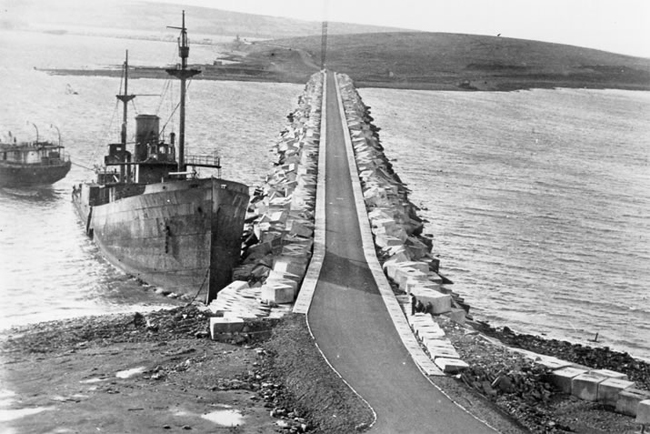

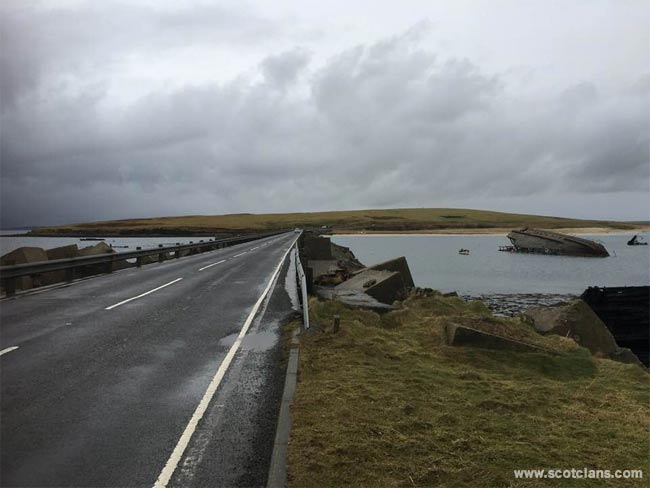
What must these Italians have thought, this could not have been more different from the climate in North Africa and their home in Italy. The little island (Lambholm) could hardly have appeared more desolate, it was completely bare, uninhabited, exposed to the wind and rain. The camp consisted of thirteen dark, empty huts, and a lot of mud. Against all odds it was in this setting the POWs not only made a home but an enduring legacy.
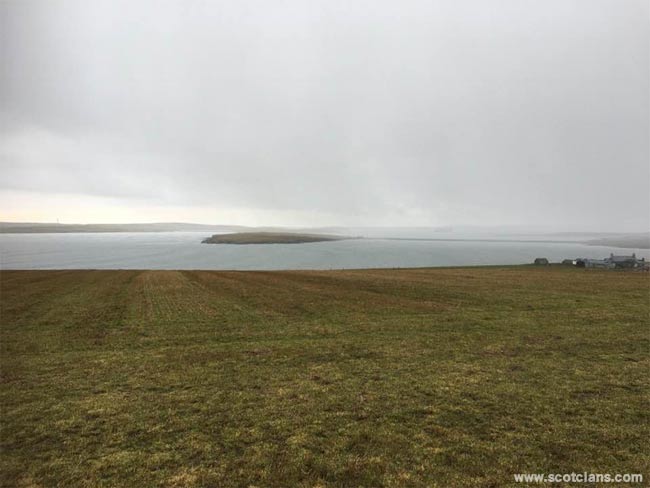
The prisoners over their time on this tiny island converted their cold empty huts and muddy field into a version of home. They used music and theatre to lift their spirits building an operetta (small theatre) in camp.
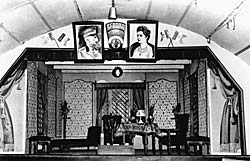
The Italians planted flowers, laid concrete paths, built vegetable plots and a recreation hall, complete with three concrete pool tables – they even had a camp band which played popular tunes from home.
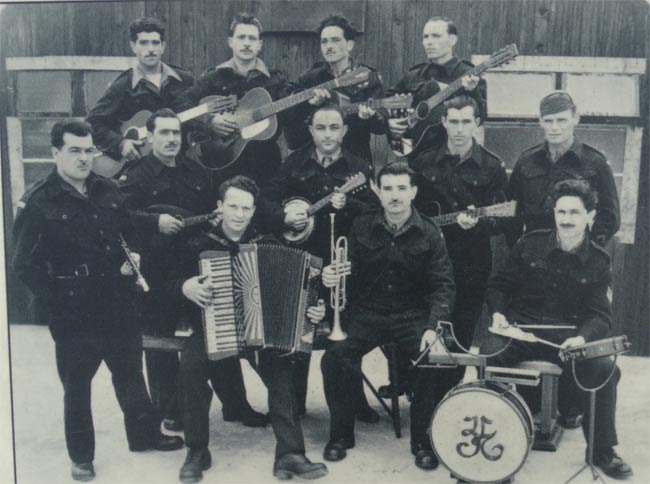
An artist from Moena, Domenico Chiocchetti, made a statue of St George slaying the dragon for the ‘square’. It had a frame made of barbed wire and was covered with cement. The base of the statue contained all of the prisoners names and some Italian coins and the statue itself represented the prisoners triumph over defeat and loneliness during the years of captivity on Lambholm.
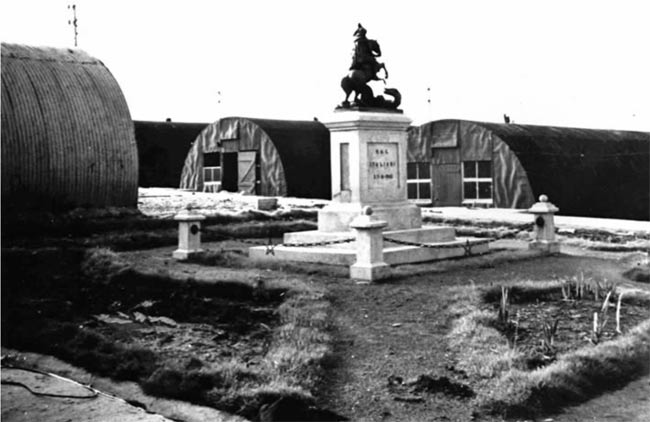

The Italian Chapel
One thing Camp 60 did lack was a chapel, this was felt deeply by the prisoners. A most fortunate combination of circumstances brought together at Camp 60 a new commandant, Major T.P. Buckland, who was in favour of the idea, an enthusiastic padre, Father P. Gioacchino Giacobazzi and the artist Chiocchetti. It was these three men that really led the project, with a lot of help from the other men at Camp 60. In 1943 two Nissen huts were made available to the prisoners for this purpose. They were placed end to end and joined together. The original plan was to have a chapel in one end and a school in the other. With the comandant’s blessing, Chiocchetti set to work building a chapel at the far end. As he worked his imagination caught fire. The POWs had limited materials at their disposal, this was a collosal project but Chiocchetti knew no limits. Among the prisoners was Buttapasta, a cement worker, Palumbi, a smith, Primavera and Michelin were electricians as well as other skills brought in by other men.
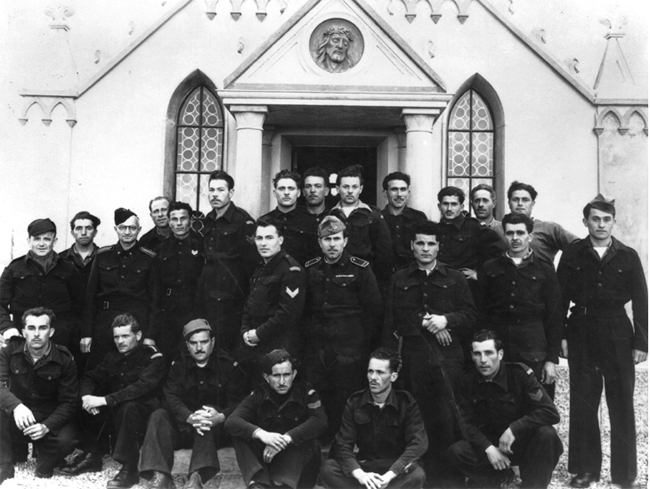
The unsightly corrugated iron of the huts was hidden by plaster-board, smooth above, panelled below. The altar-rail, and holy water stoop, all beautifully designed, were moulded in concrete.

Behind the altar, reaching up to the sanctuary roof, and buttressed by two windows of painted glass, representing St Francis of Assisi and St Catherine of Siena, was lovingly depicted the Madonna and Child, Chiocchetti’s masterpiece, based on a holy picture he had carried with him all through the war.
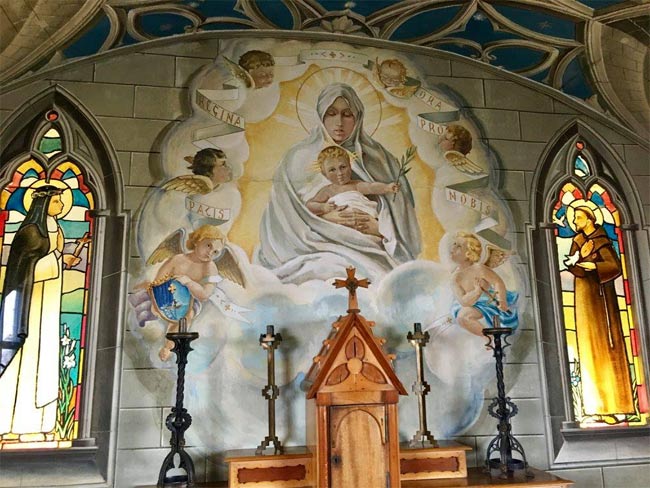
Two candelabras were made in iron by Palumbi and four in brass by Primavera. Wood was obtained from a wrecked ship for the tabernacle. The sanctuary vault was frescoed by Chiocchetti with the symbol of the four evangelists, and lower down he painted two Cherubim and two Seraphim.
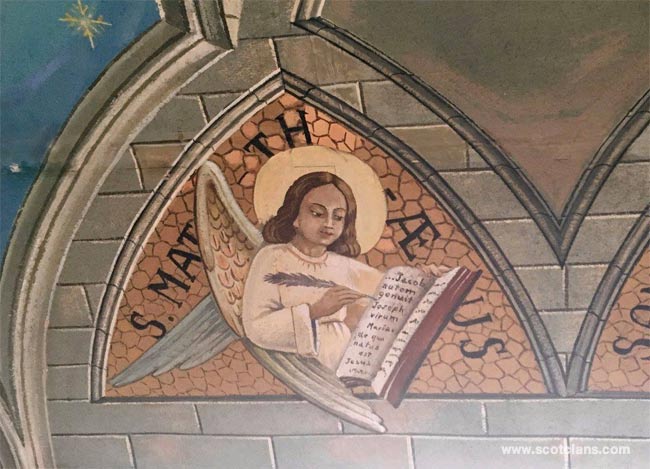
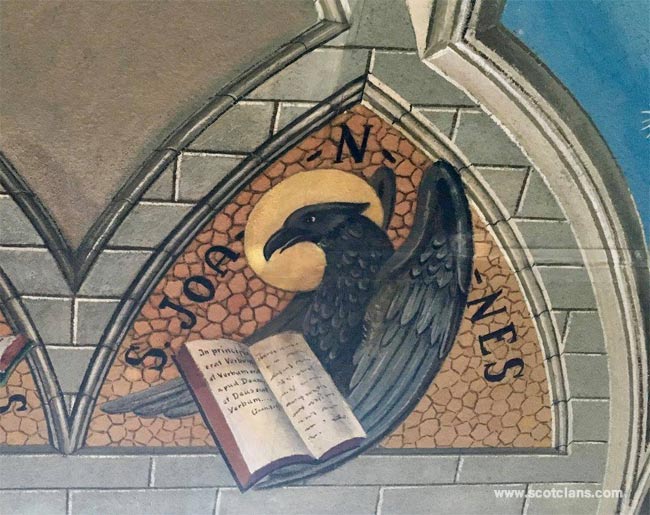
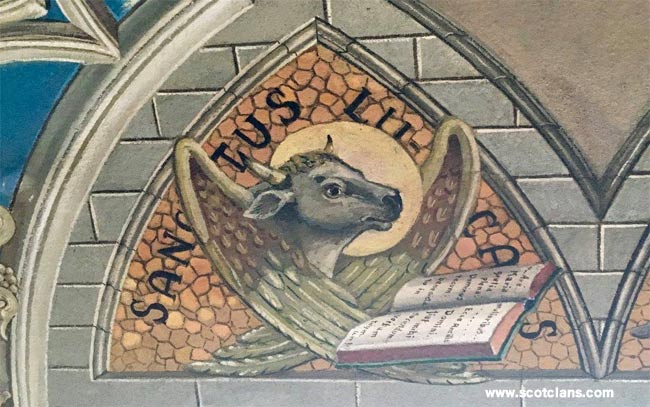
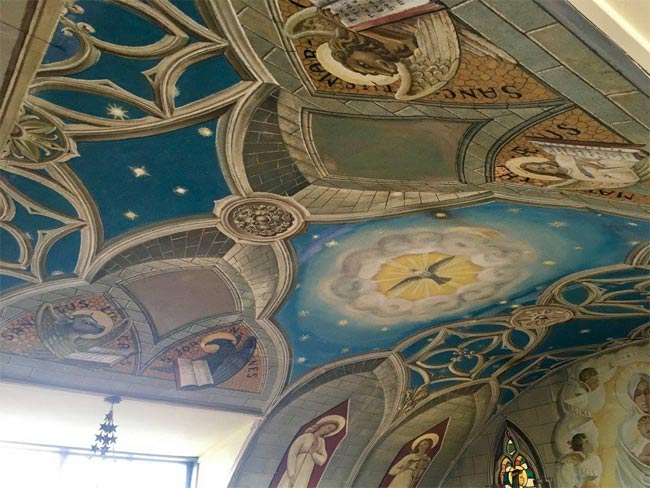
In the very centre of the vault hovered the white dove, symbol of the Holy Spirit. The contrast was so great between the complicated chancel and the rest of the hut that Palumbi, who had been a wrought-iron worker in America, was asked to make a rood-screen. The making of this screen and gate occupied four months.
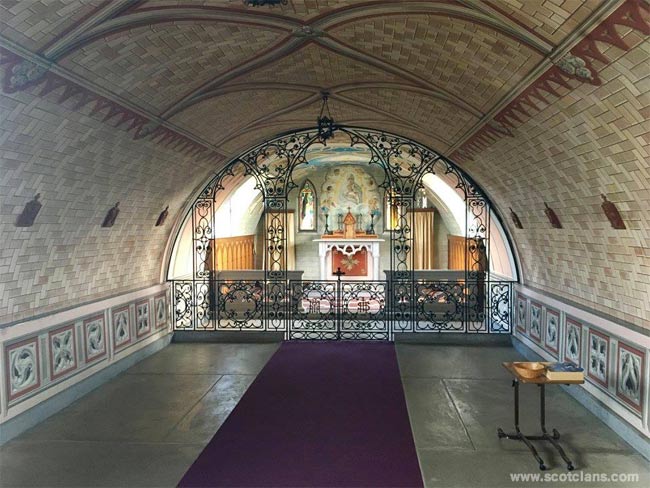
The appearance of the rest of the hut now looked uninviting and needed beautifying. The commandant managed to secure some plasterboard, enough to line the building completely. Chiocchetti’s idea was to paint the whole interior to resemble brick-work, with a dado along the base of the curved walls, which would imitate carved stone. This amount of work was too much for one man, so a painter was sent from another camp to work under Chiocchetti’s direction.
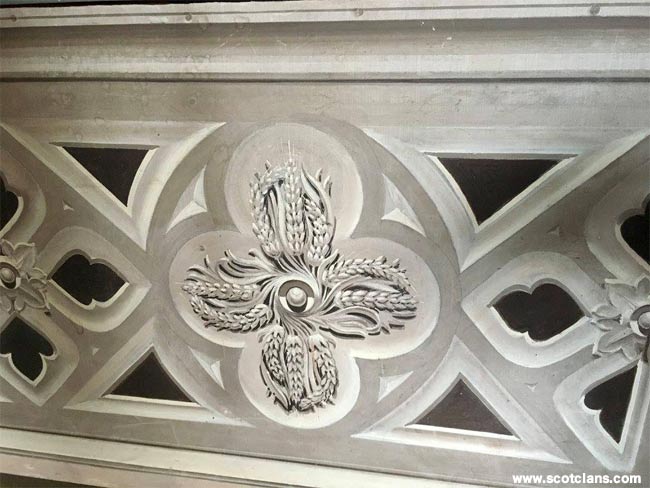
Now the outside of the Chapel looked unsightly and needed attention. With the help of Buttapasta, an impressive facade was erected. In the centre was built an archway supported by cement pillars.
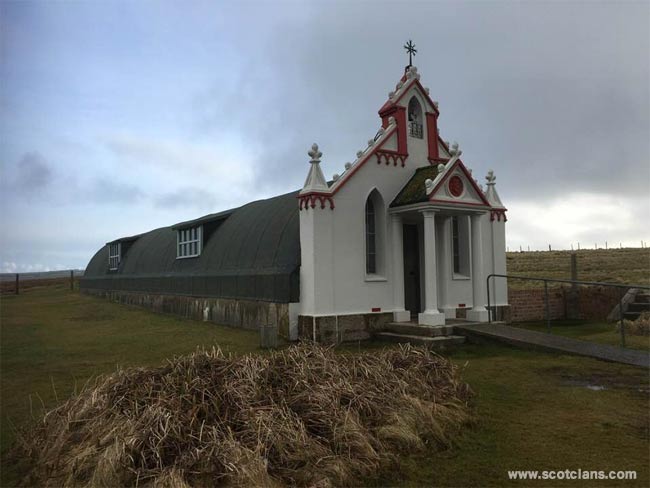
On the front of the archway Pennisi moulded in red clay a head of Christ.
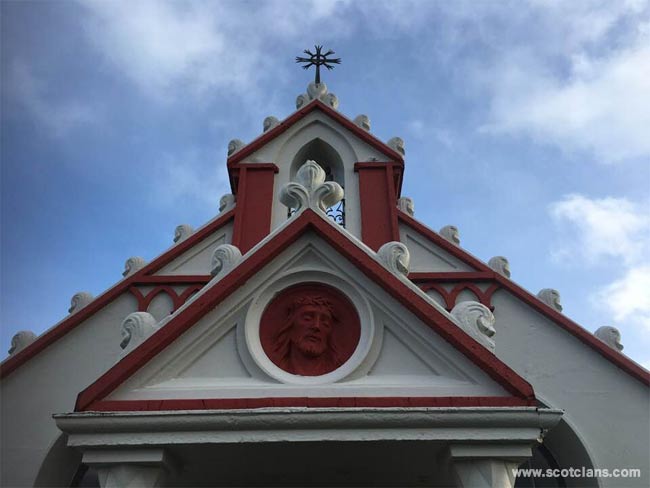
Over the years this head has become marred by weather.
Finally, a thick coat of cement was applied to the whole exterior of the iron huts.
When the prisoners left the island on 9 September, 1944, Chiocchetti remained behind to finish the font which was still to be completed. A promise was given to he prisoners by Mr P. N. Sutherland Graeme, Lord Lieutenant of Orkney, who was the owner of the island and who had taken much interest in their welfare that the people of Orkney would cherish their chapel .
Restoration and Preservation
The question of the preservation has troubled Mr Sutherland Graeme, especially as he was advised that the nature of the building materials used made permanent preservation impracticable. The problem became urgent as it’s fame grew and it condition deteriorated. In July 1958 on the initiative of Father J. Ryland Whitaker, S. J., a preservation committee was formed, with Mr Sutherland Graeme as its first president. During 1958 the committee did a series of repairs, financed by the contributions of visitors. Recent work on the chapel has included the application of a bituminised waterproof covering to the roof. So the chapel remains, after seventy years, as the reminder of a faith that flourished in adversity, and a memorial to the genius of its Italian builders.
A BBC programe about the chapel in 1959 tracked down the artist Chiocchetti to Moena, a village in the Dolomites. In March 1960, a dream to the local committee came true. As its guest Domenico Chiocchetti paid a three week visit to Orkney. His return to his chapel was for him a deeply moving experience. During the period of his stay Chiocchetti, assisted by Mr Stanley Hall of Kirkwall, restored the paint-work of the chapel interior and did many outstanding repairs.
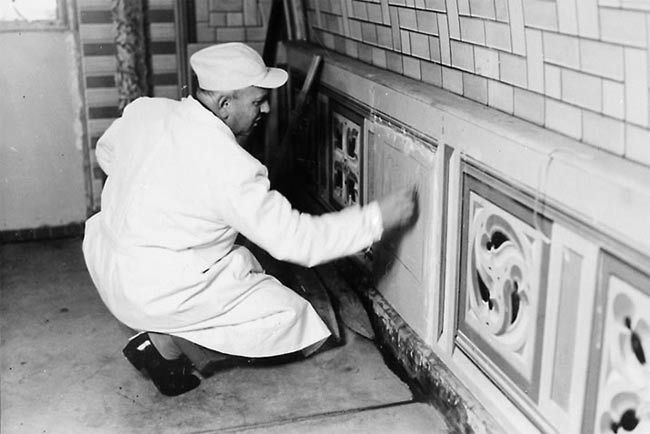
When Chiochetti returned in 1964 with his wife Maria, he brought the gift of 14 lovely carvings of the Stations of the Cross, which are hung on the walls of the Italian Chapel to this day.
An Enduring Friendship
The chapel is testimony to the resolve, skills and imagination of the Italian POWs, and is held in great affection by Orcadians and visitors from around the world.
Nothing now remains of Camp 60, you can just make out some steps and hut foundations, as well as the path but the Italian Chapel and the statue of St George remains and attracts thousands of visitors every year.
Domenico Chioccetti wrote this letter to the people of Orkney at the end of his visit:
Dear Orcadians – My work on the chapel is finished. In these three weeks I have done my best to give again to the little church that freshness which it had sixteen years ago.
The chapel is yours – for you to love and preserve. I take with me to Italy the remembrance of your kindness and wonderful hospitality.
I shall remember always, and my children shall learn from me to love you.
I thank the authorities of Kirkwall, the courteous preservation committee, and all those who directly or indirectly have collaborated for the success of this work and for having given me the joy of seeing again the little chapel of Lambholm where I, in leaving, leave a part of my heart.
Thanks also in the name of all my companions of Camp 60 who worked with me.
Good-bye dear friends of Orkney – or perhaps I should say just “au revoir.”
DOMENICO CHIOCCHETTI
In 1992 although Chiochetti was too ill to travel, a group of eight former prisoners returned to the Chapel for the 50th Anniversary of their arrival on Orkney. Sadly Domenico Chiocchetti died in 1999 in Moena, aged 89. His wife and daughter attended a memorial requiem mass at the Chapel in his honour.
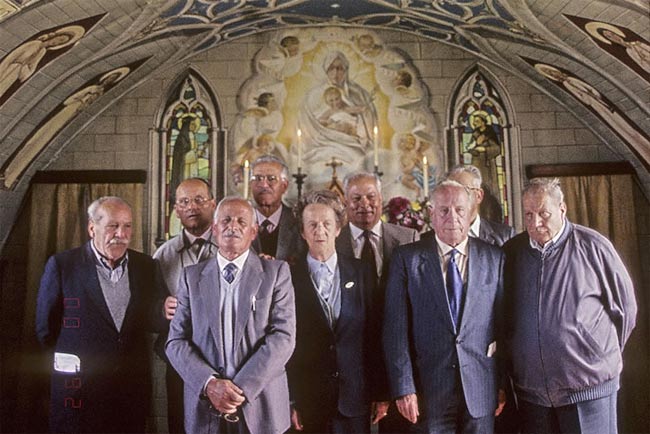
A short video from our trip to The Italian Chapel.

This is an incredibly moving presentation. Truly, the skills, talent and love of these captive Italians for their faith as represented by
this magnificent little chapel. Working with extremely few and primitive materials, they captured their beliefs and brought their
faith to a splendor rarely seen in such a desolate island. What a testimony to the power of faith….creating beauty in the mist of the
stark terror of war. Perhaps, an example of the Best of man and Worse of man in one place on earth.
Thank you so very much for the magnificent presentation!